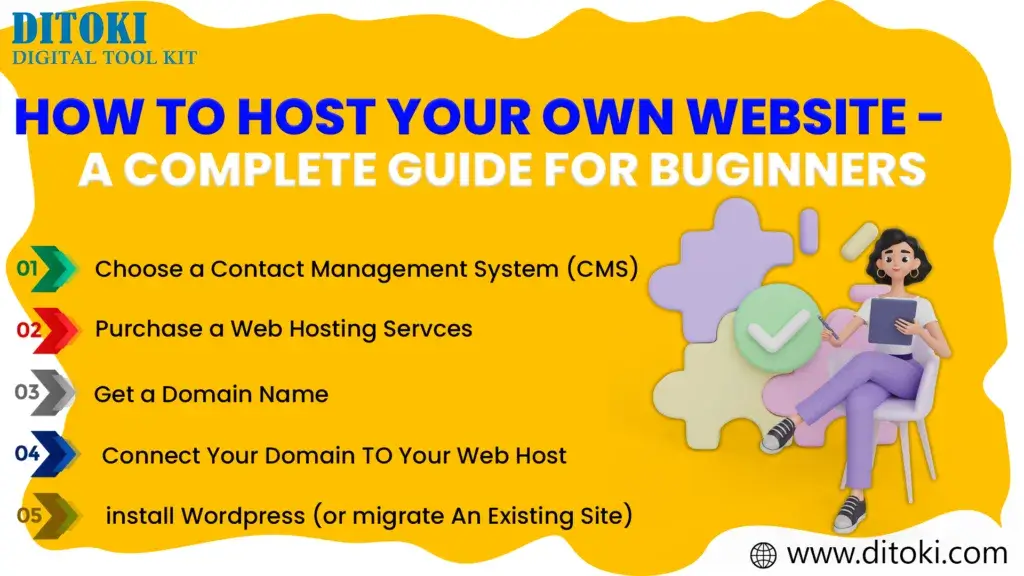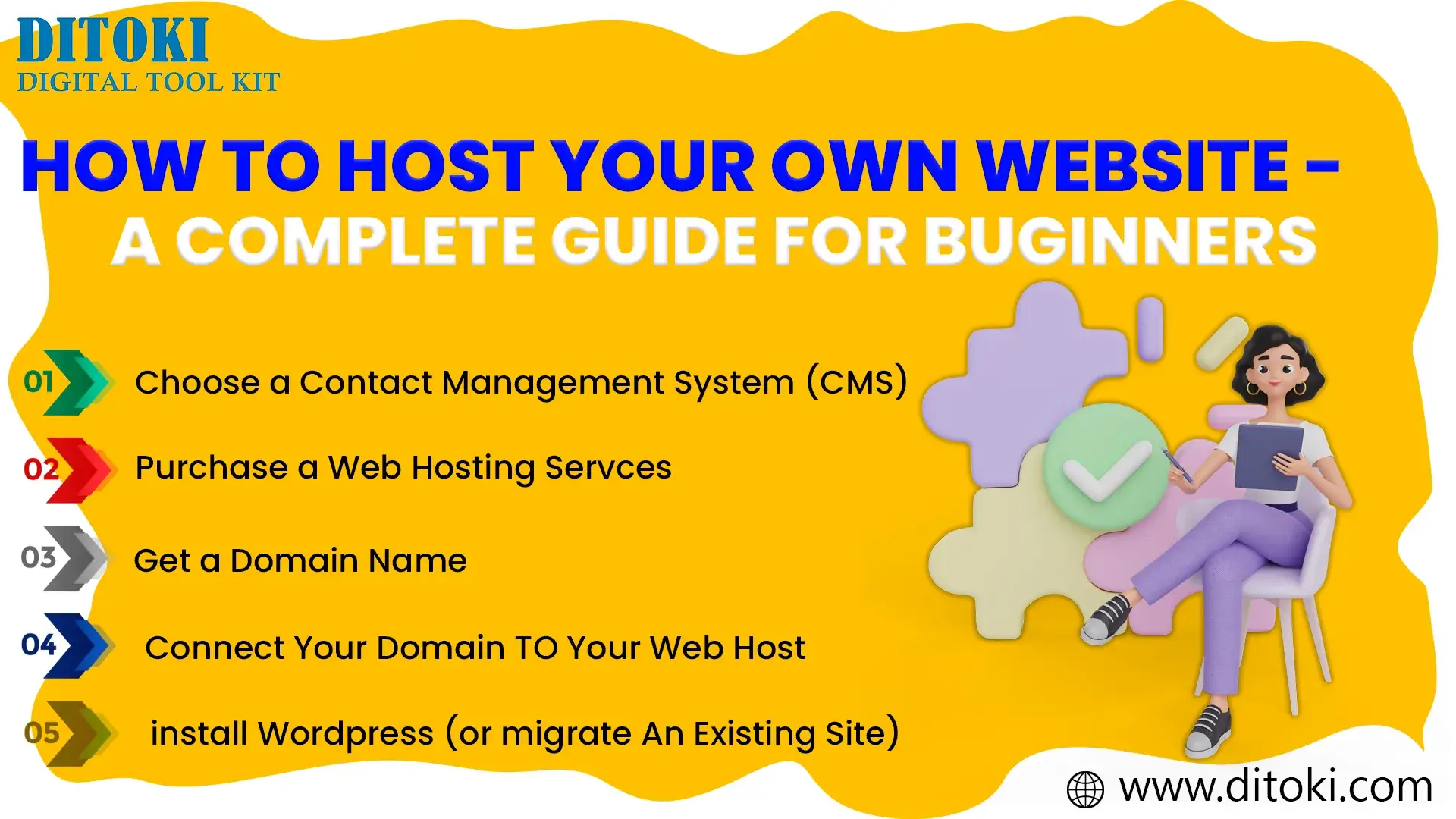Here is the five-step guide to How to Host Your Own Website:

1. Choose a Content Management System (CMS)
The initial step is selecting a content management system (CMS) if you haven’t chosen the platforms to develop your site yet. The reason is that the system your site was created on will affect how you host your site.
For such an average person building a website, the option among WordPress and an all-in-one web developer like Wix, Squarespace, or Shopify comes down to two broad categories of platforms.
Pricing, customization options, and simplicity of use are the main distinctions between WordPress and website builders. Even though it requires external site hosting, WordPress is also an open-source, free system for managing content. How to host your own website: With its vast versatility, users can create virtually any website, including extensive functionalities.
This does, however, have a rather high learning curve and is considerably more difficult to use. Conversely, website builders are made to make creating websites simple.
2. Purchase a Web Hosting Service
If you choose to utilize WordPress, the next phase is to choose a web hosting company. Several web hosting companies exist, including Bluehost, DreamHost, and Hostinger, all of which offer a comparable but slightly distinct feature set (e.g., storage and bandwidth limits, uptime guarantees, speed, contract length, and price.)
A hosting package offering extras such as a free domain, SSL certificate, and easy WordPress installation, like Bluehost’s, is ideal for new websites.
When hosting an existing website, opt for a web host like Hostinger, offering free WordPress site migration.
Visit the top web hosting services for more information and assistance in making the correct hosting service choice.
3. Get a Domain Name
Obtain your domain straight through one of the top domain registrars, such as Namecheap, Domain.com, or Google Domains, if you do not even already have one.
But, your web hosting provider might already provide a domain name for free in your plan. You can still purchase your domain name at any registrar.
Generally, buying your domain from your web hosting provider saves time, eliminating the need for separate domain-to-host connections.
4. Connect Your Domain To Your Web Host
There seem to be numerous methods for linking your domain name to your web server, depending on where you bought it. For example, if you buy a domain name via your web host, it will be connected to them instantly. If you are currently using a web server, you will need to directly link your domain to it.
Visit the website wherever you purchased your domain name to do this (e.g., Namecheap or GoDaddy). After that, modify the configuration for your domain name to point it to the hosting server.
You ought to have received name servers, sometimes referred to as DNS, on your web hosting account. In order for users to access the material you are hosting on the server of their choice when they enter “www.yourdomain.com,” you must point your domain name to one of these locations.
You must log into your domain name settings and select the “DNS Settings” page after finding the name servers. Next, you just swap out your present domain name servers with the ones your web host gives you.
5. Install WordPress (or Migrate An Existing Site)
The system’s last stage is to decide whether to install WordPress using your domain or your web hosting subscription. With only one click, consumers are able to link their domain and hosting services plan to WordPress thanks to the free one-click WordPress installation offered by the majority of top web hosting companies.
cPanel or your web hosting account, or frequently both, will let you utilize just one setup feature based on the web host you choose.
The simplest approach to connect is by employing a WordPress migration service if you are currently using a WordPress website and are switching to a new hosting company.
Your website hosting provider typically offers this free of charge. However, certain providers do charge an additional fee for this migration service.
Bottom Line: Host Your Own Website
The thought of hosting your own website might seem intimidating at first, particularly if you don’t have much experience with web development. However, thanks to their progress, web hosting companies now successfully assist users in hosting their own websites.
Your host is typically the first line of defense when users encounter problems because most hosts provide complete help centers as well as live assistance.
Read out the detailed instructions on how to create a website for further information.
